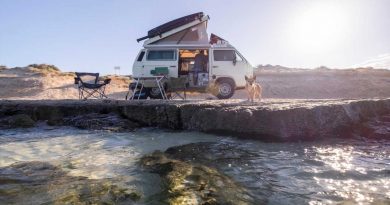How to be an eco friendly traveler in Denver, Colorado
If nothing else, Earth Day each April serves as a reminder to be mindful of everyday habits — from how your home is powered to what you do with leftovers. Once you leave home though, how can you continue to reduce your carbon footprint as you explore the earth in pursuit of new experiences, sights and people?
There are a few ways for visitors to Denver and other parts of Colorado to offset their environmental impact, from which businesses they choose to how they get around while here.
Travel
When travelers arrive at Denver International Airport, there are many choices for how to get into the city and beyond: rent a traditional gas car or truck; rent a hybrid or electric vehicle; take a gas, hybrid or EV taxi; ride the bus; or take the light rail train.
Single-passenger vehicles are the least environmentally friendly option, but they make the most sense for getting around when going outside of the core downtown area. The more cars on the road, the more emissions creating pollution and traffic. Consider renting an EV or hybrid, or taking mass transit into downtown and only using a car share when needed to cut down on a trip to and from the airport. This choice might also save on overnight parking expenses. The light rail train is the “greenest” choice for transportation from the airport when arriving in Denver.
Once you are downtown, you can use mobile apps to find Lyft e-bikes and Lime scooters rather than driving. If you take a bus to Boulder, or the light rail to Golden, see what alternative transportation options exist there for getting around in those cities.
Some places, such as Rocky Mountain National Park and the Hessie Trailhead outside of Nederland, have shuttle buses to reduce congestion in these fragile areas.
Hotels
The biggest news in “green” lodging isn’t open yet, but Denver is on track to be home to the world’s first carbon-positive hotel, Populus. Created by Urban Villages, the hotel is expected to open later this year with 265 rooms, a rooftop restaurant and bar, and ground floor retail space.
The promise of being carbon positive is going to be made by planting at least 5,000 acres of forest, which offsets a carbon footprint. They will also use low-carbon concrete mix and “high-recycled” content materials. The hotel developers also aim to receive LEED gold certification.
Leadership in Energy and Environmental Design (LEED) is framework created by the U.S. Green Building Council to inspire and award construction of buildings for using more sustainable materials and energy sources. There are four different levels of LEED certification.
Travelers can support these green building initiatives by choosing hotels that have LEED certification. The Westin Denver International Airport Hotel and Transit Center has LEED platinum certification; SpringHill Suites Denver Downtown has achieved LEED gold certification; Limelight Hotel Denver (formerly Hotel Born) is LEED silver certified. These are not the only green hotels in Denver, and some are in the process of LEED certifications.
Food and drink
There are many ways that restaurants and bars can make themselves more eco-friendly, including how they source their ingredients, how they dispose of leftovers and even the materials used in design of their space.
Farm-to-table dining is one way that restaurants can cut down on the distance food is transported to them and therefore doing something good for the environment. However, it’s not possible to have a 100% farm-to-table restaurant so diners can look at ways restaurants are trying to be green.
Root Down, with locations in the Highlands neighborhood and the airport, can brag that they are completely wind-powered. While their menu is not all vegetarian, the emphasis is on vegetables and they claim that their meat is pasture-raised. Their own organic garden provides 20% of the vegetables and herbs for this and sister restaurants.
The Mercury Café in downtown is solar- and wind-powered and uses local and organic ingredients for their menu of simple salads and sandwiches.
Carboy Winery Denver starts its sustainability efforts with growing the grapes for their wines on the Western Slope. Think of it as “grape to glass” rather than farm-to-table at Carboy Winery. The bar donates a percentage of all tasting room sales to regenerative agriculture and carbon farming through Zero Footprint’s Restore Colorado campaign. They also reuse their aging barrels as much as possible and chose energy-efficient lighting for the tasting room.
The restaurant Annette in the Stanley Marketplace has completed the Zero Footprint carbon-neutral program, which can be done by having a surcharge to go back to local farms.
When dining out, check the website of the restaurant or ask about practices like sourcing food, composting, and supporting local farms.
Small things
It seems like it’s gone from optional to required to bring your own shopping bag. There are many reusable tote bags that easily fold into a pocket or purse, then can be used as needed while out supporting local businesses. This way you don’t create the need for more bags or leave more trash in a hotel room when packing to leave.
Take the bring-your-own-bag concept one step further and bring your own mug — only makes sense if you haven’t flown in! — to a local brewery. The Denver Mug Club has a monthly membership, which then offers discounts at participating breweries when you bring in the mug.
Biking to some breweries can also get you a small discount, such as during the monthly West Denver Brewery Bike Loop that offers $1 off a beer for biking there.
If you didn’t travel to Denver with your own reusable water bottle, buy one locally and reuse it as you stay hydrated to help your body adapt to the higher elevation. You might find one at the I Heart Denver store in the Denver Pavilions to support Colorado-made products that have not traveled extra miles to be sold here, which is also good for the environment.
Going beyond Denver: Colorado’s carbon-neutral cities
Did you know that Aspen and Glenwood Springs are carbon-neutral since they are powered completely by renewable energy? You can get to Glenwood Springs by Amtrak train, which Amtrak states is “46% more energy efficient than traveling by car.” Once in Glenwood, you can get around on foot pretty easily to get to the hot springs, stay in a hotel and dine out.
There are more and more options for travelers who are being climate aware in their travels these days, whether it’s how a city is powered, how a hotel was built or where their food came from.
Subscribe to our weekly newsletter, In The Know, to get entertainment news sent straight to your inbox.
Source: Read Full Article






